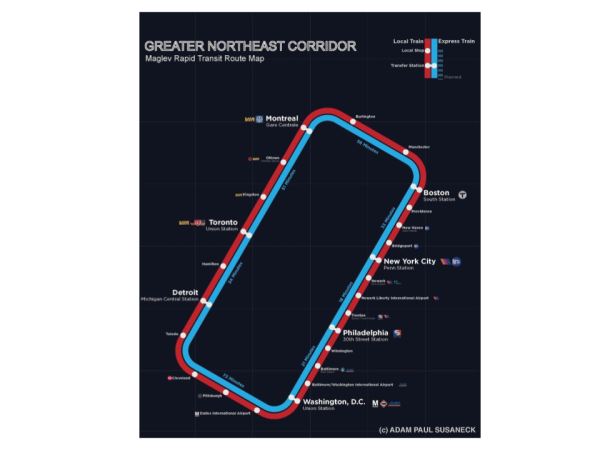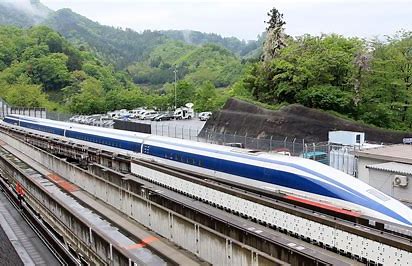It is the beginning of April and I am riding my third Greyhound bus of the year. Though these coach buses from Cleveland to my home in
Pittsburgh or vice-versa is somewhat convenient, especially when I can’t get another ride, the ticket, plus an Uber to campus gets expensive quickly.
Over the summer or breaks, when I travel to see friends at State College, Dayton or other cities, these costs cut into my savings, and make trips just too much work, particularly when trips are delayed by hours, days or just canceled outright. So, when I heard about the rumor of a high-speed rail project that would not only be faster and more regular than bus routes and cheaper than an airline ticket, I was hooked.
So, without further ado, I introduce the Greater Northeastern Corridor, by Adam Paul Susaneck.
Proponents of the plan, seemingly more on the civilian side than the scientific one, see the project as a great opportunity to connect the East with the Midwest, as well as Canada to the upper border of the American South. Though perhaps more fanciful than realistic, these projects do have some merit. Right now, the factor holding back this project the most is imagination.
One group attempting to build the first leg to this project, the Northeast Maglev, has been

(Adam Paul Susaneck)
working with the federal government since the early 2000s. After getting the green light to present environmental proposals for study zones in Western Pennsylvania and Maryland, the group decided their strongest option was the Maryland transit test.
This test, now only waiting on Environmental Protection Agency (EPA) approval for their new train tunnels, would “study areas approximately 40 miles long and 10 miles wide – roughly bound on the west by Interstate 95 and on the east by Washington, Baltimore and Annapolis”.
According to their website, active tests are set to before 2025. Though this is a pipedream for many Americans or Midwesterners wishing to go further than Northeast Ohio on a budget – it does not have to be this way.
The system as proposed uses a MagLev (Magnetic Levitation) system, which would use magnetic currents and their polar switching to drive trains forward at up to 600 miles per hour; other propulsion systems around the world seem to connect people with equally high speeds.
Ever since the mid-1960s in Japan, the Shinkansen, or bullet train network, has rocketed Japanese workers across 320 miles of rail line at 200 miles per hour – leading to a 12 hour drive from Japan’s Capital of Tokyo to Osaka to be completed in under two hours.
So, in the end, why am I on a Greyhound to Cleveland today? Whether due to lacking funding from federal agencies, or a fear of private investment in public infrastructure, there seems to be few reasons for the Federal Rail Administration or other government agencies to rush.
So, while I am waiting for tests two states away to create a quicker and better way to travel Northeastern America, I guess I’ll keep taking the Greyhound and bring my car to campus if JCUPD doesn’t ticket me first.



